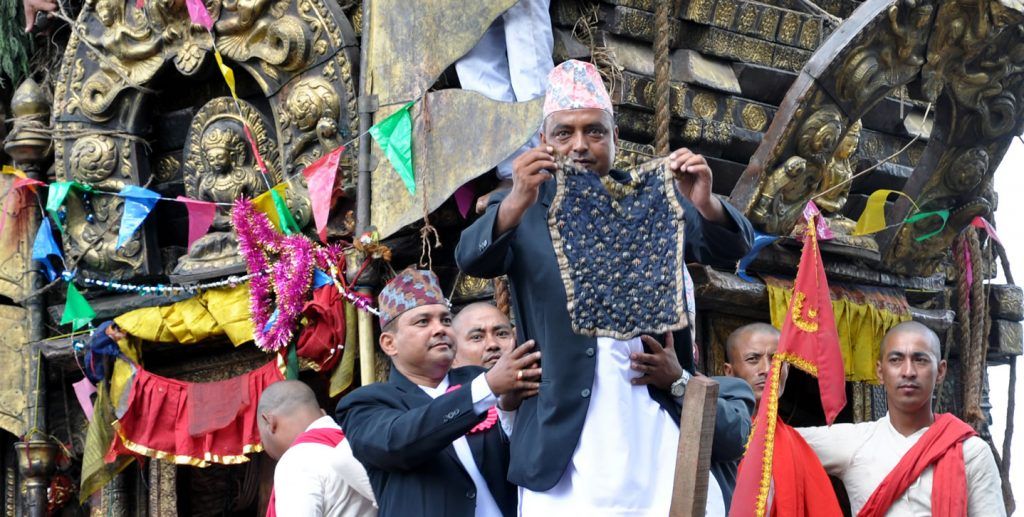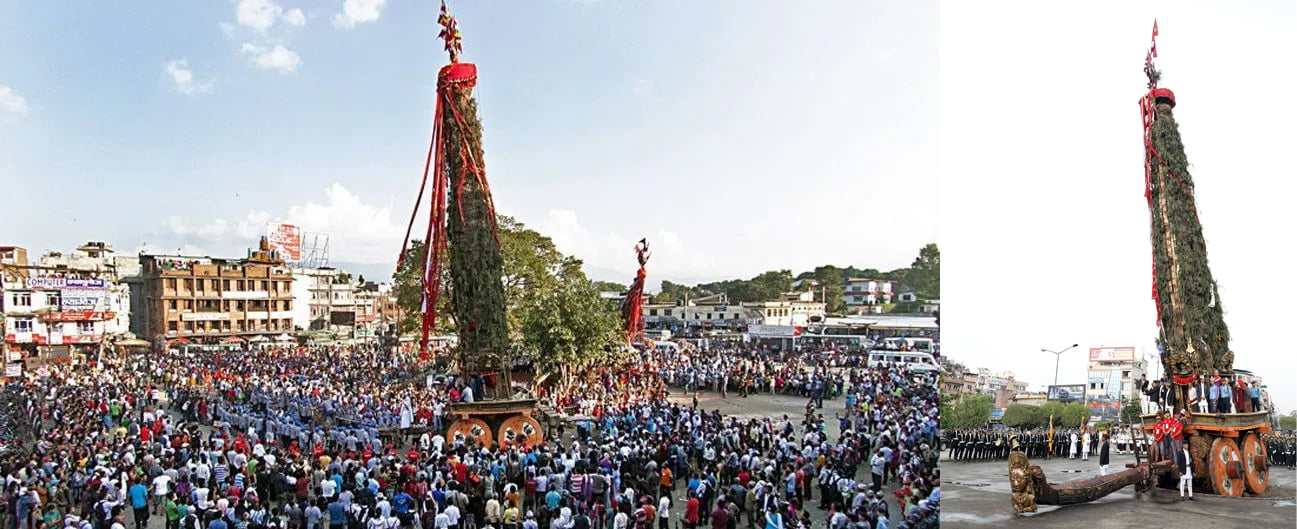Rato Machindranath is one of the most extraordinary religious events of the Newar community in the Kathmandu valley, and it is one of the longest chariot festivals celebrated in Nepal. In the Newari language, it is called Bunga Dyah Jatra.
This festival is held in Lalitpur, Nepal. Rato Machindranath Jatra is held according to the lunar calendar, so the date is changeable every year. It is celebrated at the beginning of the monsoon to appease the rain and grain, to God Rato Machindranath.
The eight localities people in Lalitpur-natal, Gabalal, Mekhabahal, Kusunti, Kayani, Walmaya, Dhaugol, and SachhiChhe lead the Rato Machindranath chariot. Lichhavi king Narendra Dev started this festival to appeal to rain and grains properly and, hence, celebrated every year.
History
In the past, for 12 years, there was no rainfall, and all the river dried off. To find out the solution to this problem, the King of Bhaktapur kingdom at that time went to Swayambhu to meet Tantrik. Then, the Tantrik said that Guru Gorakhnath is angry, so he is meditating on the cushion of 9 mighty serpents whose duty was to cause rainfall in the valley.
Until and unless the serpents will be free, rainfall doesn’t happen in the valley. It is possible only when his teacher Rato Machhindranath visits him. So the king started searching for his teacher. After some time, they find out that Machhindranath was reborn as the 108th son of King Sashi in Assam.
Then the king of Bhaktapur, Tantrik from Kathmandu, and a Newar from Lalitpur went to Assam to bring Machhindranath back. They knew that it wouldn’t be easy to get him because he was the son of Daitya. They tried a lot but they were not successful in bringing him back.
Then the Tantrik called 4 Bhairab and asked them to bring him back. Bhairab brought him back to Guru Gorakhnath, and he stood quietly seeing his teacher. Finally, the serpents were free then the rain started raining on the valley.
Now, the king, Tantrik, and Newar cannot decide how district Machhindranath should be kept, so they went to Lalitpur King to find the solution. Lalitpur King was very clever as he chose to keep RatoMachhindranath on Lalitpur. From that day, every year, people celebrate this festival in Lalitpur and pray for good rainfall.
How is the festival celebrated?
Every year, the festival starts with the preparation of a 60-foot tall chariot at Pulchowk, Lalitpur. The image of Machindranath is kept in the chariot when the trial of the chariot is completed.

Then the chariot is dragged through the street of Lalitpur, Patan, on tour. From Pulchowk, it is rotated to the city like Natole, Gabahal, Mangal Bazaar, Sundhara, Lagenkhel, Kumaripati, and Jawalakhel.
After the chariot arrive at Jawalakhel, priest make decision regarding when the Bhoto (Vest) should be displayed. As per the auspicious date chosen by priest, Bhoto Jatra(Bhoto DekhauneyJatra) take place in that day. From the head of the state to local people, all get gather to observe the Bhoto.
The respected government official climb to chariot and display the jewel-studded black Bhoto from the all sides of chariot so every person can see it. Bhoto is displayed with the hope that the real owner of the Bhoto will come with the proof and take it away. However, till date no one has arrived to claim their authority. So, it is still kept with image of Rato Machindranath.
Bhoto Jatra is always celebrated in the presence of Kumari of Patan. She watches the Bhoto displaying activity from her palace. In the end, she also visits there in Chariot and observe the whole ceremony. She also blesses the entire people around Patan with flowers and tikas.
Then after the festival’s completion, the statue of Rato Machindranath along with Bhoto is taken to Bungmati, where the statue will be kept until the next Jatra. The chariot get dismantle and is again build in the following year.
This Jatra lasts for a month. The chariot is made taking the first 15 days, and the Jatra is celebrated for the rest of 14 days in different places like Kathmandu, Lalitpur, and Bhaktapur. People eat delicious food and celebrate this festival with their family with lots of joy.
Hence, this festival carries a significant place from historical time to date. It is celebrated every year with a lot of joy and enthusiasm. People pray with god for the timely rain and enough grain along with the prosperity of society.
-Article written by: Kusum Kharel for Land Nepal

